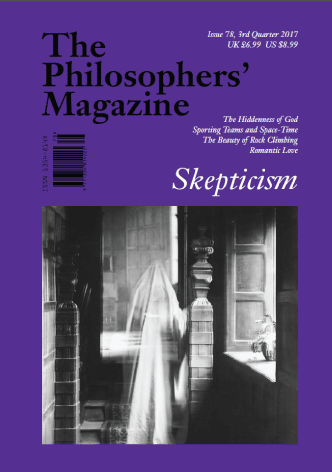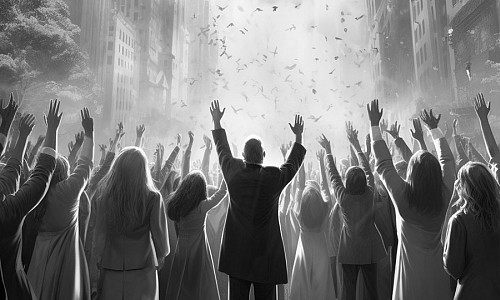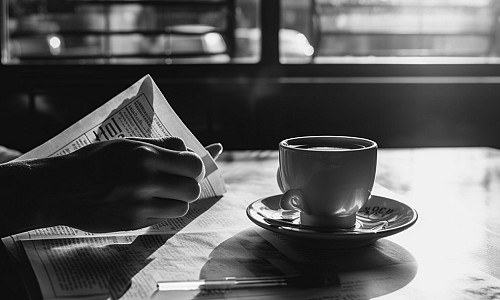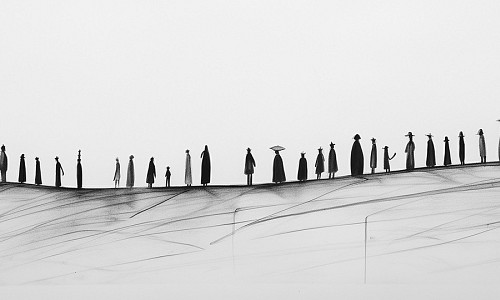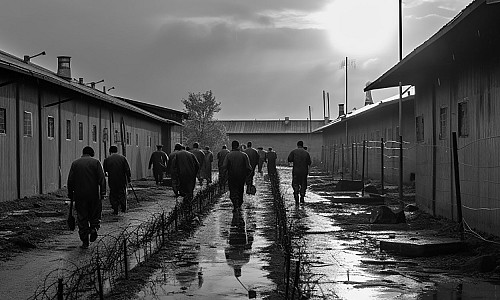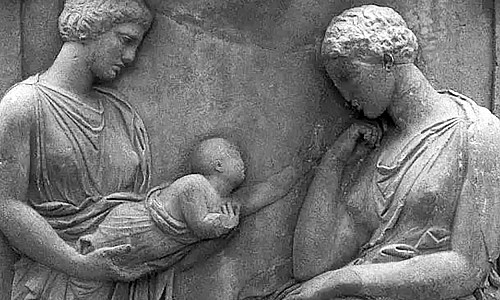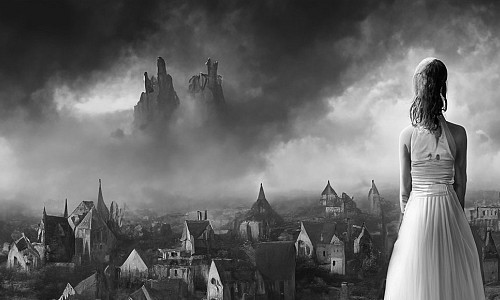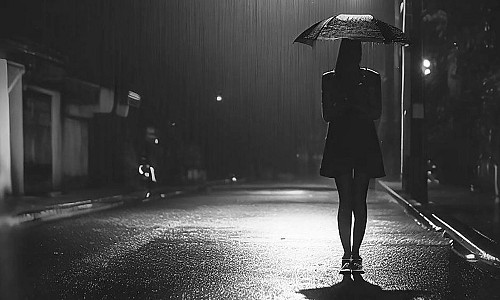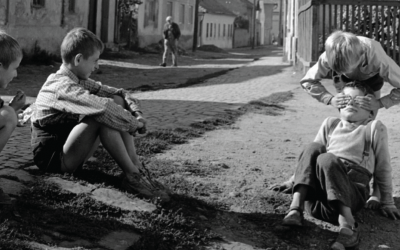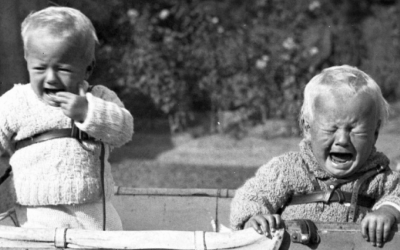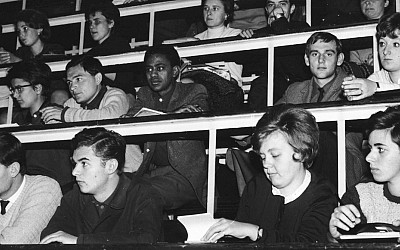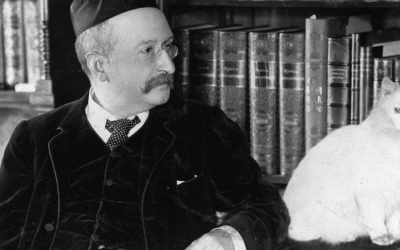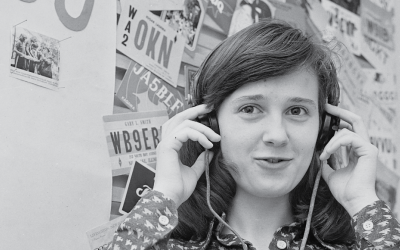Robbie Kubala on the crossword puzzle as aesthetic experience.
Have you ever struggled to solve a crossword puzzle? Or felt the elation of finally figuring out that pesky clue? (Try this: what 6-letter word fits the _ _ _ AMT pattern?*) If so, you probably didn’t think of that as an aesthetic experience: the kind of experience you can have when you walk through a landscaped garden, dance at a concert, or get absorbed in a novel.
In a recent article on “The Aesthetics of Crossword Puzzles,” published in the British Journal of Aesthetics, I argued that this is one of three ways in which crosswords can give us aesthetic experiences. The other two are simpler to explain. We can see crosswords as sources of visual delight, taking pleasure in the black-and-white grid pattern, or in the kind of shape a puzzle can form. (See https://www.xwordinfo.com/GridArt for some neat examples of grid art.) And we can appreciate crosswords as a kind of poetry, enjoying idiomatic phrases - recently debuted slang in the New York Times includes IT’S BEEN REAL and HELL TO THE NO - and fun clue-entry pairs. (One of my favourites: Natan Last, in The New Yorker, used “Awkward knee-jerk response to a waiter saying ‘Enjoy your meal!’” as a clue for YOU TOO.)
But the most distinctive kind of aesthetic experience of crosswords has to do with the way we respond to our own efforts while solving. Often, in appreciating the arts, we react to the agency of others. This can happen in two ways. In watching a movie, we might be frustrated with a character’s decision (shouting “don’t go in there!” at the screen). But we might also love the director who gave us that experience by creating their film. The first is a reaction to the internal world of the artwork; the second is a reaction to the world outside the work.
Besides having aesthetic experiences of what others do, however, we can also have aesthetic experiences of our own agency, as Thi Nguyen argues in his groundbreaking book Games: Agency as Art (2020). Building on Nguyen’s work, I argue that puzzles as well as games can give us such experiences. In particular, we can experience the harmony of solution, which is an aesthetic property of the delightful fit of a crossword answer with its clue. Consider this cryptic clue: “Actress in Titanic and iceberg encounter (7,6).” Do you see it right away? If not, I’ll tell you that you’re looking for the name of an actress (first name 7 letters, last name 6 letters), and all the letters are right there in the clue. Or maybe you don’t see it, in which case you might be experiencing the distinct aesthetic property of unresolved disharmony: you’re frustrated by not being able to come up with the solution.*
Our aesthetic experiences of our own agency are analogous to our reactions to the internal world of an artwork: our frustration with our inability to finish a puzzle is like our frustration with a character who makes a dumb choice in a movie. But there’s also a connection between our reactions to artists and our reactions to crossword constructors: in both cases, we can feel grateful or annoyed, frustrated or astounded, by what they make. I call these kinds of reactions aesthetic reactive attitudes. These are the attitudes we form in response to aesthetic agency.
To be clear, I don’t think it’s very interesting to debate whether crosswords are, strictly speaking, art. Some people don’t think art can even be defined at all: maybe it’s an open concept, one whose boundaries are ever shifting as the sociological institutions of the artworld change. But I do think it’s important that crosswords can be worth spending time on, that crosswords can merit our aesthetic engagement. And one way to see this is to recognise that crossword constructors are, in important ways, like artists. Constructors are the ones who give us the experiences we have, by designing the puzzles they do, just as Jordan Peele, say, gives us a certain kind of experience by directing the films he does. So besides focusing on how we can have aesthetic experiences of our own agency, another way of arguing that crosswords merit our aesthetic engagement is to focus on the fact that crossword constructors, like (other) artists, can have a style.
Some examples: Kameron Austin Collins constructs tough themeless puzzles with a low word count and a cosmopolitan range of cultural references. Liz Gorski is known for intricate themes and clever grid art. Martin Ashwood-Smith’s grids are often recognisable even before you fill them in, since he loves to use triple or even quadruple ‘stacks’ of 15-letter answers.
There seem to be three major elements of a crossword that can be stylistic: grid shape or layout, difficulty level, and the ‘voice’ of a puzzle. Voice, in turn, is a matter of both clue and answer writing. (Peter Gordon’s fabulously lengthy clues, often too long to be published in a print newspaper, are part of his style.) The style of a set of answers - particularly longer, ‘marquee’ answers - pertains to things like choice of idiom or subject matter. Some constructors try to represent particular social groups or subcultures with the names and phrases they include. These three elements can intersect: for instance, grid layout affects answer length, which in turn affects voice. In the end, style may be a matter of overall gestalt, stemming from the ways in which these elements combine.
What is it for a constructor to have a style, anyway? There are a number of theories of individual artistic style, but one I’m attracted to comes from the philosophers Nick Riggle and Robert Hopkins, who think that style is the expression of the ideals an artist has for their art. Rather than holding that an artist’s style is, somehow, a manifestation of their actual personality, Riggle and Hopkins take it to be a realisation of their conception of artistic excellence. On this view, each constructor’s style makes a distinctive claim about what makes a puzzle good.
Crosswords can seem pretty simple: just black-and-white grids, with highly constrained rules. But even within these limited resources, individual style can break through. When we love some constructors for the puzzles they create, we’re not just admiring the quality of their puzzles, but the ways in which they actualise new possibilities for the art form.
*Answers: DREAMT, CANDICE BERGEN.
Robbie Kubala is assistant professor of philosophy at the University of Texas at Austin. He is also a speed crossword solver who has finished in the top 25 at the American Crossword Puzzle Tournament.
You might also like...
